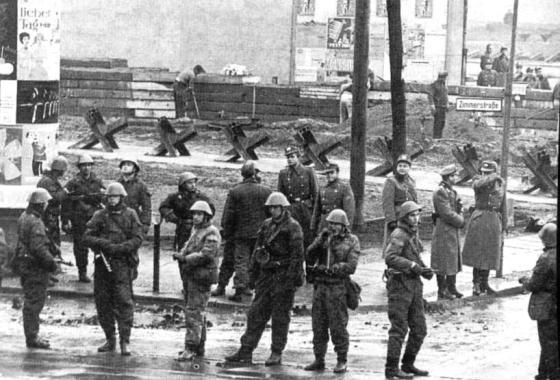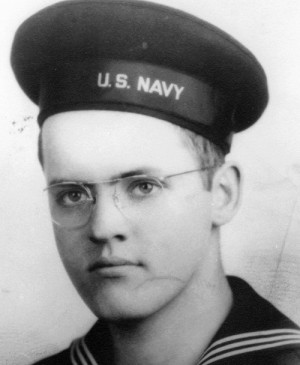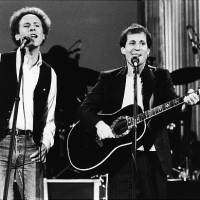On August 13, 1961, East Germany begins building the Berlin Wall in an effort to stem the tide of refugees attempting to leave East Berlin. The wall divided communist East Berlin from West Berlin. The wall came to symbolize the Cold War. By August 15, 1961, the two parts of the city were sealed off. Some of these dates may not be completely accurate. I found conflicting dates in various resources. The video below from a series titled A Day that Shook the World, shows August 20, 1961. None of these conflicts are that far apart, so it is good enough for me.
Throughout the 1950s and into the early 1960s, thousands of people from East Berlin crossed over into West Berlin to reunite with families and escape communist repression. In an effort to stop that outflow, the government of East Germany, on the night of August 12, 1961, began to seal off all points of entrance into West Berlin from East Berlin by stringing barbed wire and posting sentries. In the days and weeks to come, construction of a concrete block wall began, complete with sentry towers and minefields around it. The Berlin Wall succeeded in completely sealing off the two sections of Berlin.
The U.S. government responded angrily. Commanders of U.S. troops in West Berlin even began to make plans to bulldoze the wall, but gave up on the idea when the Soviets moved armored units into position to protect it.
The West German government was furious with America’s lack of action, but President John F. Kennedy believed that “A wall is a hell of a lot better than a war.” In an attempt to reassure the West Germans that the United States was not abandoning them, Kennedy traveled to the Berlin Wall in June 1963, and famously declared, “Ich bin ein Berliner!” (“I am a Berliner!”). Since the word “Berliner” was commonly referred to as a jelly doughnut throughout most of Germany, Kennedy’s improper use of German grammar was also translated as “I am a jelly doughnut.”
However, due to the context of his speech, Kennedy’s intended meaning that he stood together with West Berlin in its rivalry with communist East Berlin and the German Democratic Republic was understood by the German people.
In the years to come, the Berlin Wall became a physical symbol of the Cold War. The stark division between communist East Berlin and democratic West Berlin served as the subject for numerous editorials and speeches in the United States, while the Soviet bloc characterized the wall as a necessary protection against the degrading and immoral influences of decadent Western culture and capitalism. During the lifetime of the wall, nearly 80 people were killed trying to escape from East to West Berlin.
In late 1989, with communist governments falling throughout Eastern Europe, the Berlin Wall was finally opened and then demolished. For many observers, this action was the signal that the Cold War was finally coming to an end.
*****************************************************
Born Today in History:
Alfred Hitchcock (August 13, 1899 – April 29, 1980) Filmmaker who was nicknamed the “Master of Suspense” for employing a kind of psychological suspense in his films, producing a distinct viewer experience.
Died Today in History:
Florence Nightingale (May 12, 1820 – August 13, 1910), a nurse, spent her night rounds giving personal care to the wounded, establishing her image as the ‘Lady with the Lamp.’










 Check out my other blog
Check out my other blog I'M PUBLISHED
I'M PUBLISHED I'm Published Again
I'm Published Again









It seems so long ago.. wow!
LikeLike
I can’t imagine a country actually putting up a wall to keep people in so that they don’t defect but I guess it is not very unlike the Native Americans and the reservations.
LikeLike
Very true, and I’ve been to my fair share of reservations too…
LikeLike